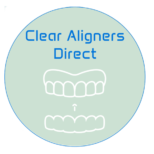🔍 Treating the Root Cause: The Link Between Airway Issues and Bruxism
Recently, I was consulted about a patient experiencing severe wear and recurrent fractures of her upper front teeth, alongside emerging TMJ discomfort. The immediate thought might be to restore the damaged teeth with crowns. However, this approach addresses only the symptoms, not the underlying cause.
Understanding the Root Cause
Bruxism (teeth grinding) and TMJ disorders often stem from underlying issues such as misaligned teeth or jaw positioning. In some cases, a retruded maxilla or upper anterior teeth positioned too far back can restrict the natural movement of the mandible, leading to excessive stress on the front teeth and the TMJ.
Moreover, airway obstruction during sleep can trigger bruxism. When the airway becomes blocked, the brain may signal the jaw muscles to tighten, partially opening the airway and allowing for some airflow. While this response may help alleviate the immediate airway obstruction, the resulting grinding and clenching of teeth can contribute to developing bruxism and related complications. (Impact of airway dysfunction on dental health)
The Role of Clear Aligners
Clear aligners can play a pivotal role in such cases. By gradually repositioning the teeth and improving the bite alignment, aligners can alleviate the stress on the TMJ and reduce bruxism. So, aligners can contribute towards alleviating the symptoms of bruxism by improving the bite or alignment of the teeth and removing interferences.
Benefits of Addressing the Cause
- Long-Term Success: By correcting the underlying alignment issues, restorations such as crowns are less likely to fail repeatedly.
- Enhanced Patient Satisfaction: Patients experience relief from discomfort and enjoy lasting results, leading to higher satisfaction.
- Reduced Practitioner Frustration: Fewer repeat procedures mean less frustration and more efficient use of time and resources.
Key take-away
While it’s tempting to address the immediate cosmetic concerns, taking the time to identify and treat the root cause can lead to more sustainable outcomes. Incorporating clear aligner therapy before restorative procedures not only enhances the longevity of the restorations but also improves overall oral health.
Let’s prioritize comprehensive care that addresses both symptoms and their underlying causes.
Contact me for more information

